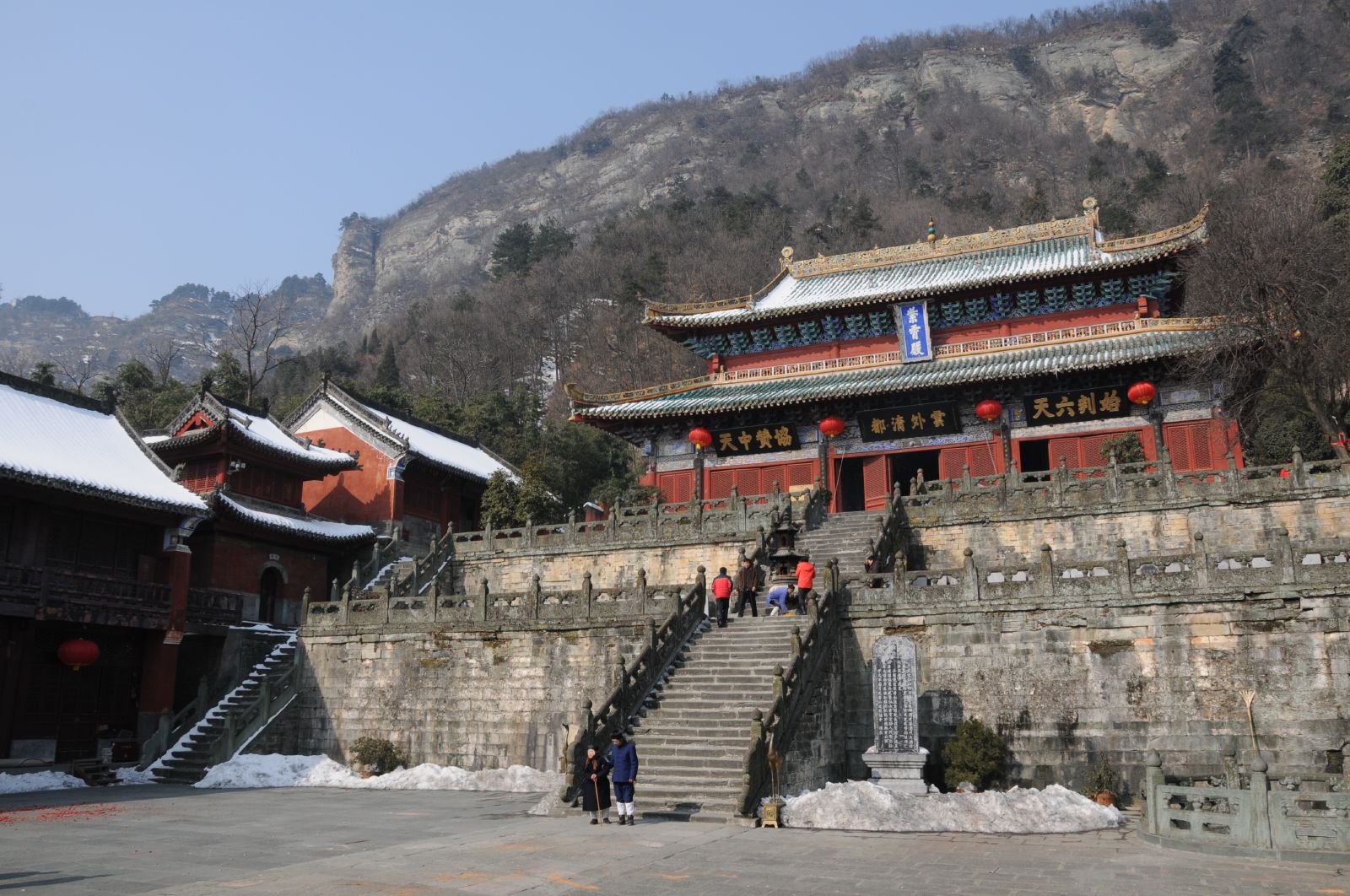Purple Cloud Temple on:
[Wikipedia]
[Google]
[Amazon]

 The Zixiao Palace () or Purple Cloud Temple, standing on Zhanqi Peak, is a
The Zixiao Palace () or Purple Cloud Temple, standing on Zhanqi Peak, is a
 The Zixiao Palace () or Purple Cloud Temple, standing on Zhanqi Peak, is a
The Zixiao Palace () or Purple Cloud Temple, standing on Zhanqi Peak, is a Taoist
Taoism (, ) or Daoism () refers to either a school of philosophical thought (道家; ''daojia'') or to a religion (道教; ''daojiao''), both of which share ideas and concepts of Chinese origin and emphasize living in harmony with the ''Tao'' ...
temple of the Wudang Mountains
The Wudang Mountains () consist of a mountain range in the northwestern part of Hubei, China, just south of Shiyan. They are home to a famous complex of Taoist temples and monasteries associated with the Lord of the North, Xuantian Shangdi. The ...
Taoist complex in the northwestern part of Hubei
Hubei (; ; alternately Hupeh) is a landlocked province of the People's Republic of China, and is part of the Central China region. The name of the province means "north of the lake", referring to its position north of Dongting Lake. The prov ...
, China
China, officially the People's Republic of China (PRC), is a country in East Asia. It is the world's most populous country, with a population exceeding 1.4 billion, slightly ahead of India. China spans the equivalent of five time zones and ...
.
History
After being built in 1119–26, it was rebuilt in 1413 and extended in 1803–20.Temple complex
The Purple Cloud Temple consists of several halls and Daoist statues including the Dragon and Tiger Hall, the Purple Sky Hall, the East Hall, the West Hall, the Parent Hall and the Prince Cliff. The Purple Sky Hall is enshrined with statues of Zhen Wu at different stages of his life. Statues of Zhen Wu's parents rest in the Parent Hall. On the left side is the Chinese deityGuanyin
Guanyin () is a Bodhisattva associated with compassion. She is the East Asian representation of Avalokiteśvara ( sa, अवलोकितेश्वर) and has been adopted by other Eastern religions, including Chinese folk religion. She ...
, and on the right is the Shouzi Mother to whom couples traditionally pray for sons. The hall also houses cultural relics, some of which date back as far as the 7th century, including the Green Dragon Crescent Blade
The Green Dragon Crescent Blade () is a legendary weapon wielded by the Chinese general Guan Yu in the 14th-century historical novel ''Romance of the Three Kingdoms''. It is a guandao, a type of traditional Chinese weapon.
It is also sometimes ...
.
References
Taoist temples in China Major National Historical and Cultural Sites in Hubei Ming dynasty architecture {{Tao-stub